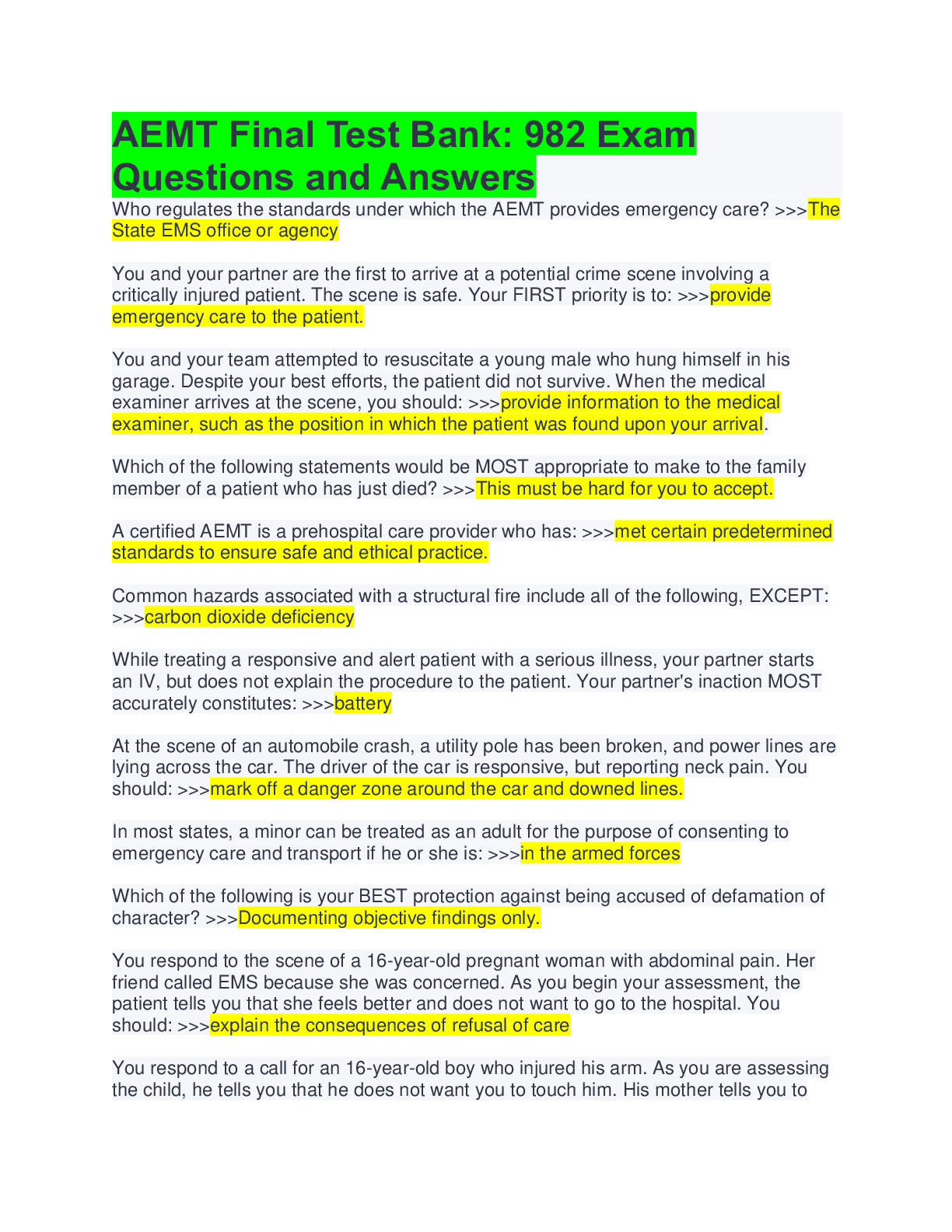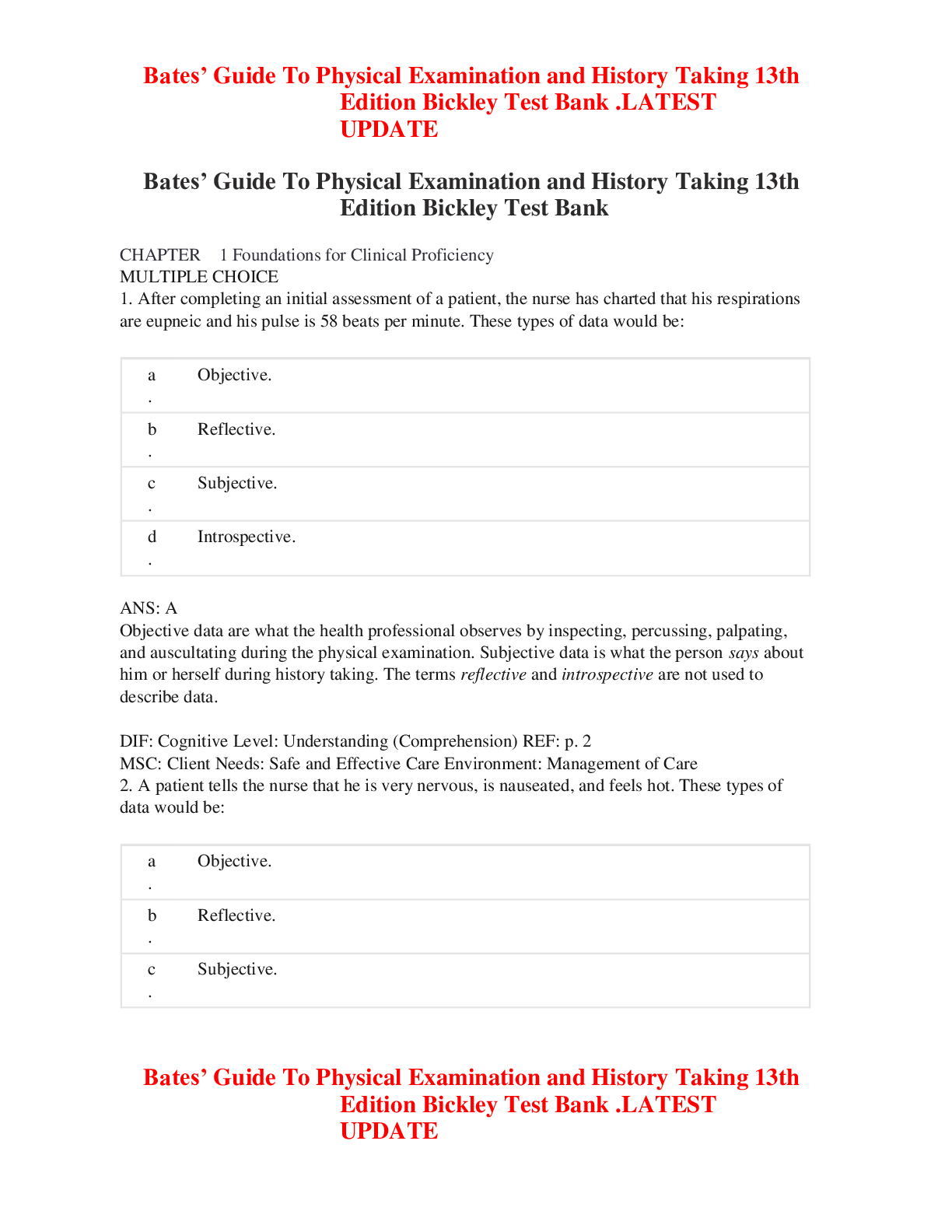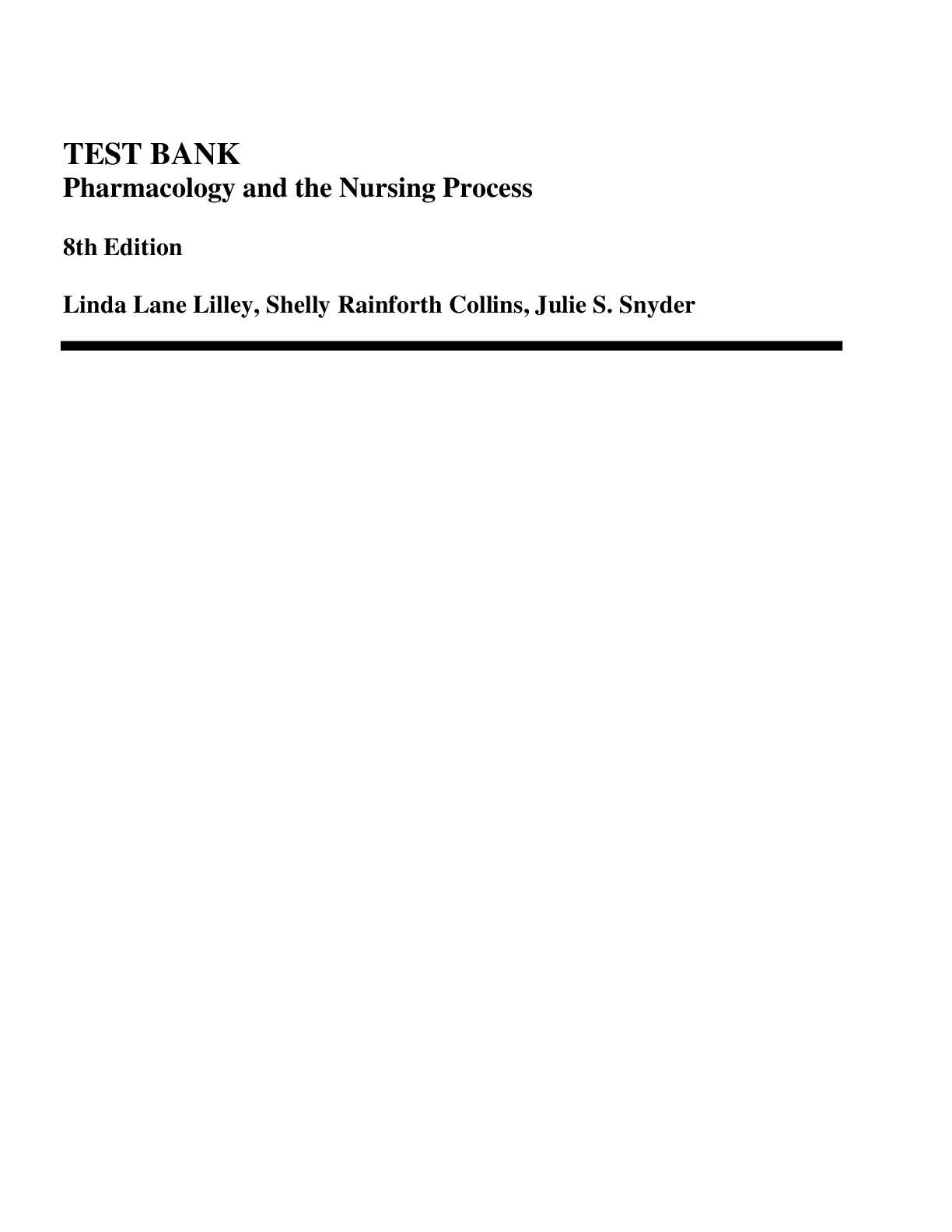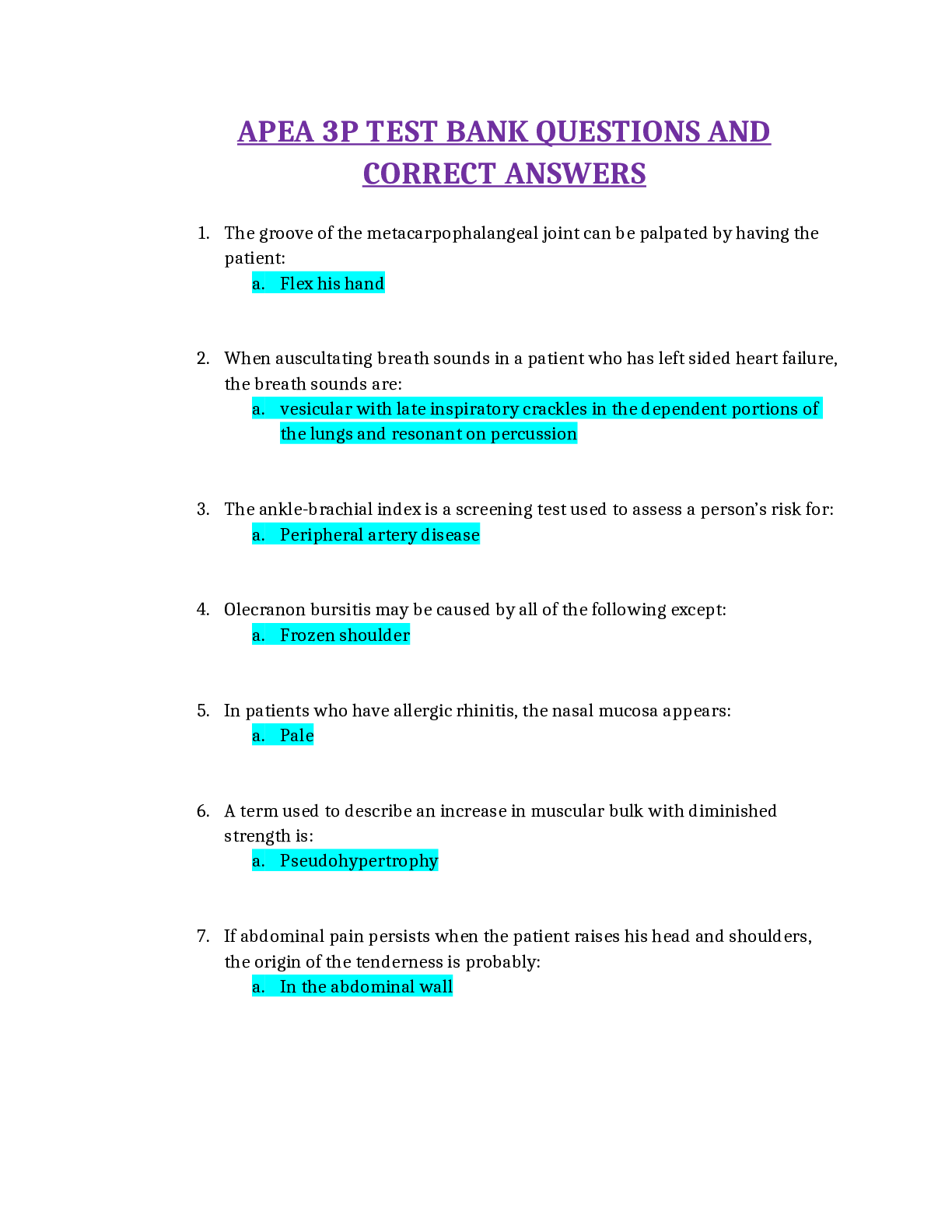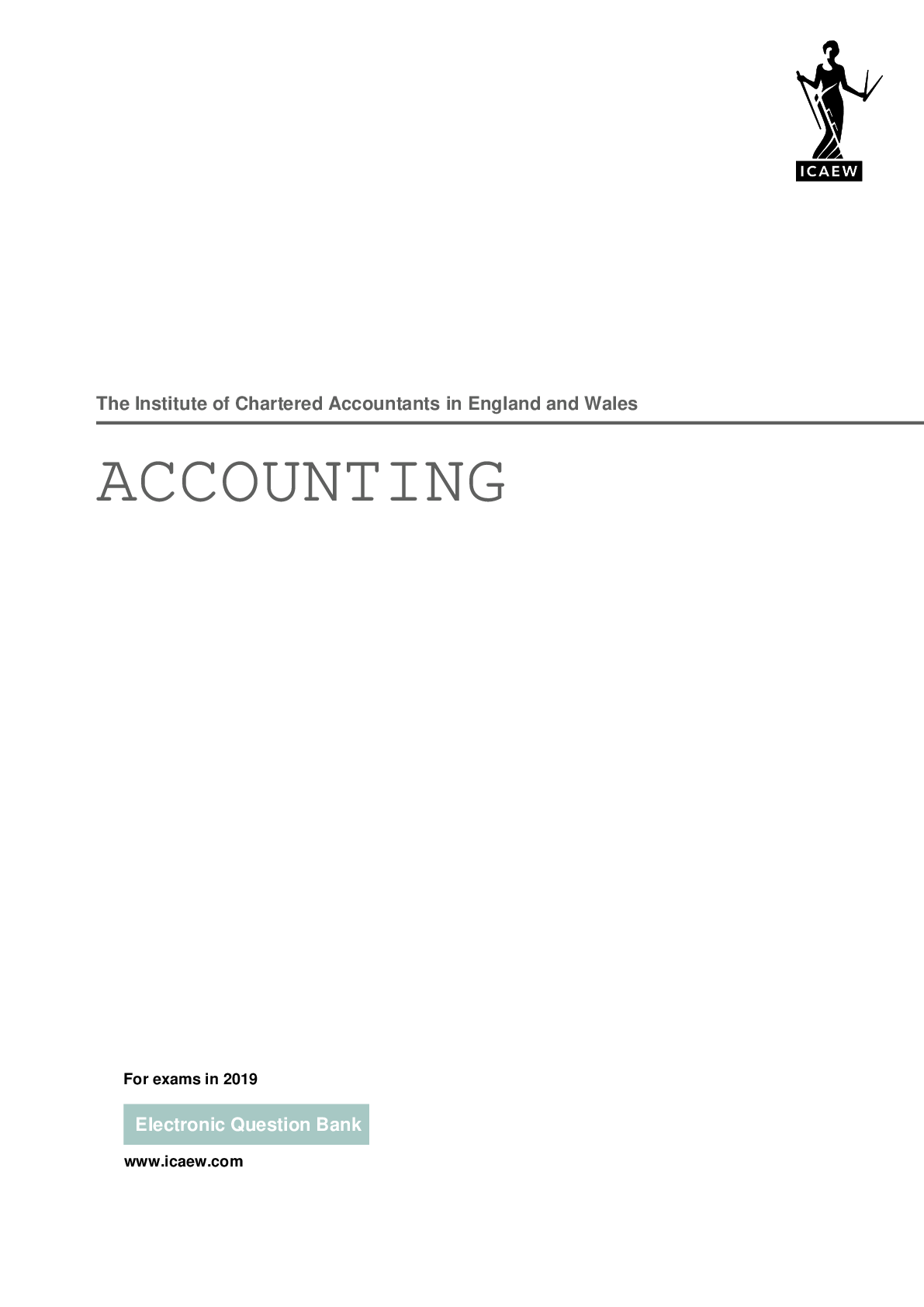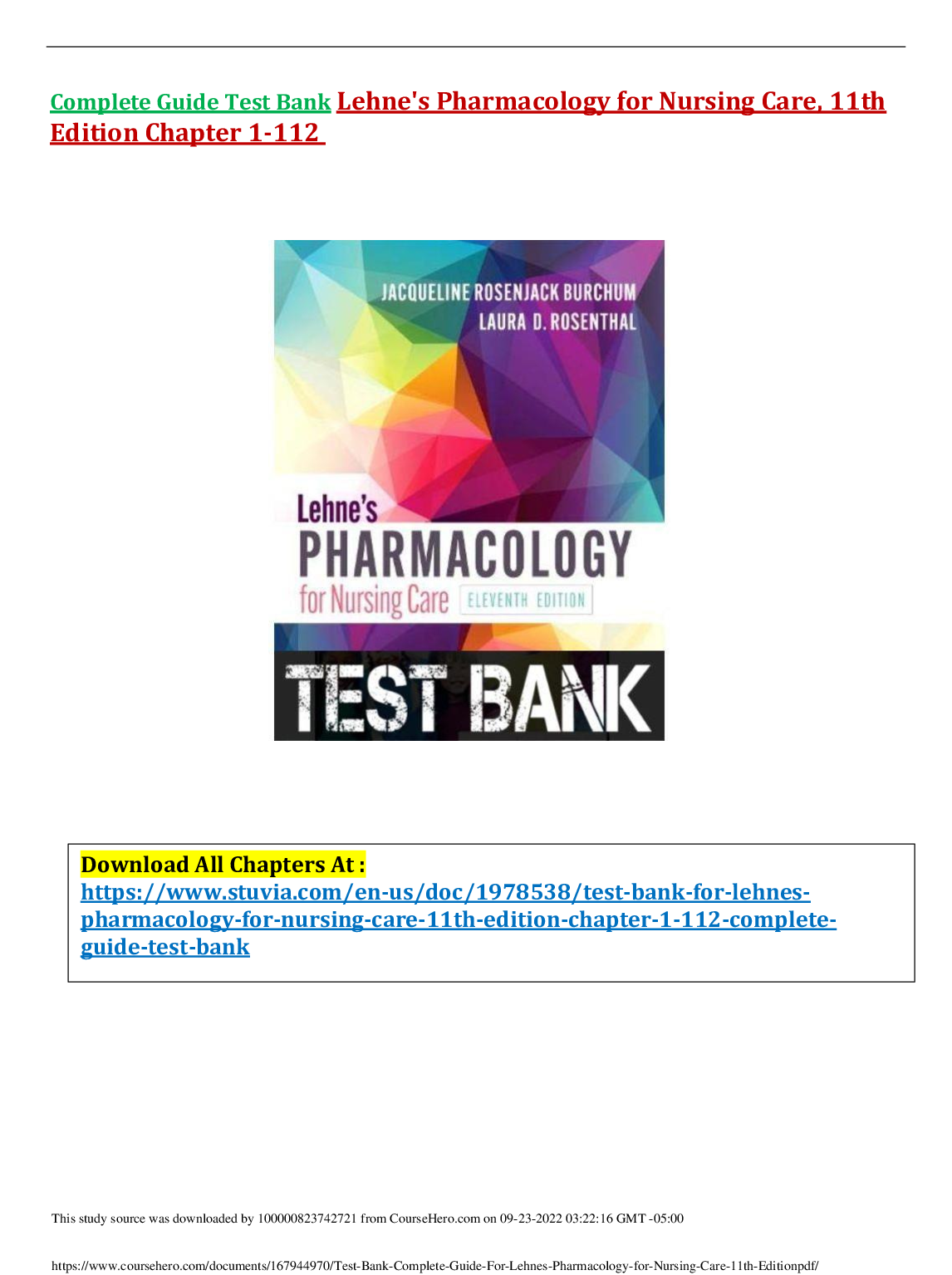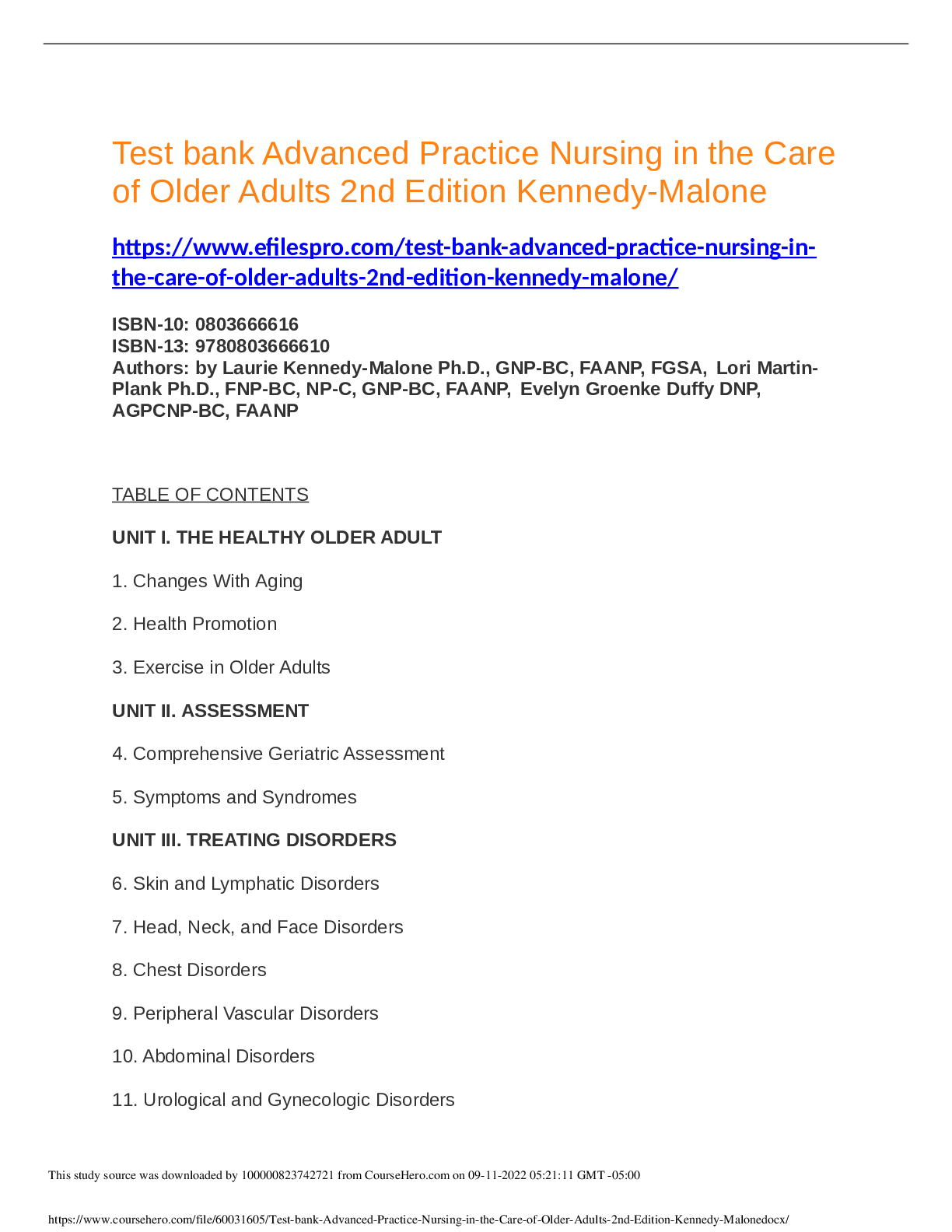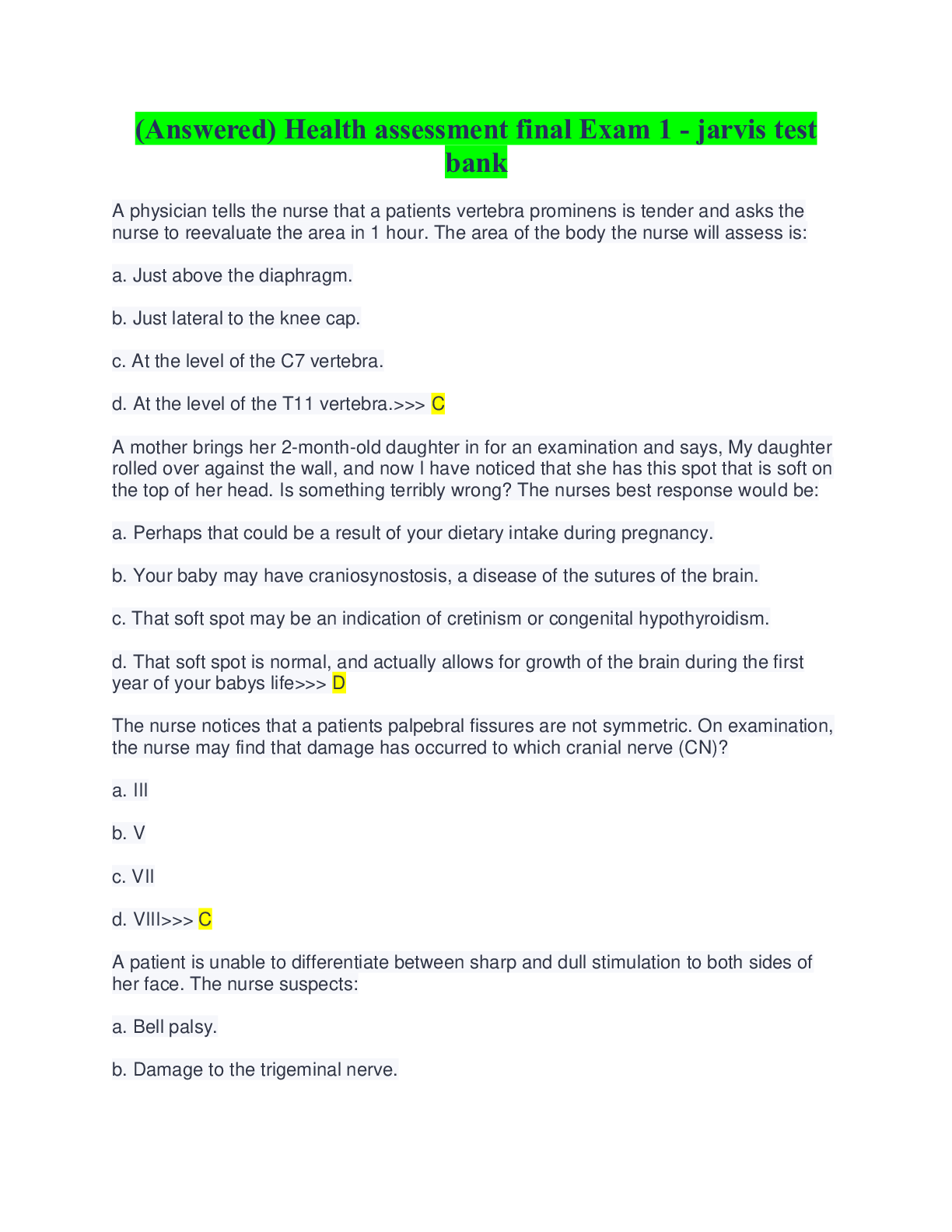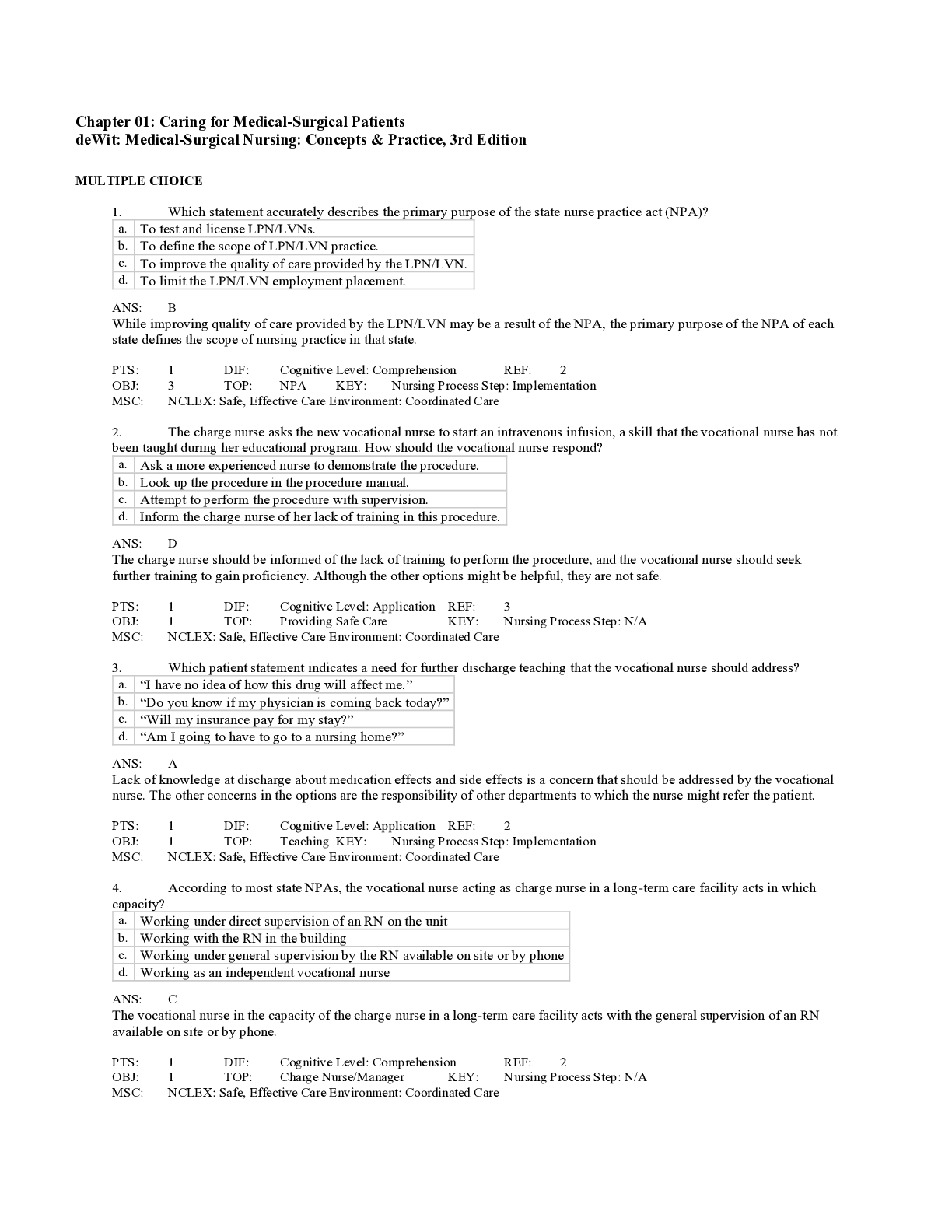*NURSING > TEST BANKS > Test Bank Medical-Surgical Nursing- Concepts & Practice, 3rd Edition by Susan C. deWit, Candice K. K (All)
Test Bank Medical-Surgical Nursing- Concepts & Practice, 3rd Edition by Susan C. deWit, Candice K. Kumagai
Document Content and Description Below
MULTIPLE CHOICE 1. The nurse uses a diagram to demonstrate how in dehydration the water is drawn into the plasma from the cells by which process? a. Distillation b. Diffusion c. Filtration d. O... smosis ANS: D The process of osmosis accomplishes the movement of water from the cells into the plasma, causing dehydration. PTS: 1 DIF: Cognitive Level: Knowledge REF: 32 OBJ: 3 (theory) TOP: Dehydration KEY: Nursing Process Step: Implementation MSC: NCLEX: Physiological Integrity: Physiological Adaptation 2. The nurse assessing a patient with vomiting and diarrhea observes that the urine is scant and concentrated. Which controlling factor is responsible for compensatory reabsorption of water? a. Osmoreceptors in the hypothalamus b. Antidiuretic hormone in the posterior pituitary c. Baroreceptors in the carotid sinus d. Insulin from the pancreas ANS: B The antidiuretic hormone controls how much water leaves the body by reabsorbing water in the renal tubules. PTS: 1 DIF: Cognitive Level: Comprehension REF: 30 OBJ: 2 (theory) TOP: Regulation of Body Fluids KEY: Nursing Process Step: Implementation MSC: NCLEX: Physiological Integrity: Physiological Adaptation 3. The nurse uses a picture to show how ions equalize their concentration by which passive transport process? a. Osmosis b. Filtration c. Titration d. Diffusion ANS: D Diffusion is the process by which substances move back and forth across compartment membranes until they are equally divided. PTS: 1 DIF: Cognitive Level: Knowledge REF: 31 OBJ: 2 (theory) TOP: Diffusion KEY: Nursing Process Step: Implementation MSC: NCLEX: Physiological Integrity: Physiological Adaptation 4. Which term describes the active transport process that moves sodium and potassium into or out of cells? a. Filtration b. Sodium pump c. Diffusion d. Osmosis ANS: B The sodium pump is the mechanism by which sodium and potassium are moved into or out of cells regardless of the concentration. PTS: 1 DIF: Cognitive Level: Knowledge REF: 32 OBJ: 2 (theory) TOP: Active Transport KEY: Nursing Process Step: Implementation MSC: NCLEX: Physiological Integrity: Physiological Adaptation 5. The patient taking furosemide (Lasix) to correct excess edema shows a weight loss of 5.5 pounds in 24 hours. The nurse calculates that this weight loss is equivalent to how many liters (L) of fluid? a. 1 L b. 1.5 L c. 2.0 L d. 2.5 L ANS: D Each kilogram (2.2 pounds) of weight loss is equivalent to 1 liter of fluid. Therefore, 5.5 pounds ÷ 2.2 pounds = 2.5 liters. PTS: 1 DIF: Cognitive Level: Application REF: 33, Clinical Cues OBJ: 1 (clinical) TOP: Fluid Loss KEY: Nursing Process Step: Assessment MSC: NCLEX: Physiological Integrity: Physiological Adaptation 6. The nurse is caring for a patient with a potassium level of 2.9 mEq/L. The nurse should carefully monitor the patient for which potential problem? a. Excessive urinary output [Show More]
Last updated: 2 years ago
Preview 1 out of 10 pages
.png)
Buy this document to get the full access instantly
Instant Download Access after purchase
Buy NowInstant download
We Accept:

Reviews( 0 )
$15.00
Can't find what you want? Try our AI powered Search
Document information
Connected school, study & course
About the document
Uploaded On
Sep 16, 2022
Number of pages
10
Written in
Additional information
This document has been written for:
Uploaded
Sep 16, 2022
Downloads
0
Views
150


